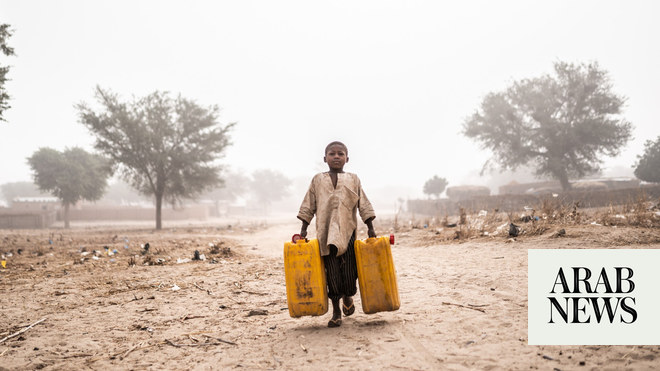
Two years of severe drought in the Amazon rainforest have left nearly half a million children facing shortages of water and food or limited access to school, according to a UN report.
Scant rainfall and extreme heat driven by the climate crisis have caused rivers in what is usually the wettest region on Earth to retreat so much that they can no longer be traversed by boats, cutting off communities.
The effects are being felt most by children, with more than 1,700 schools and 760 health centres in the Amazon having become inaccessible or out of reach, according to the report from the children’s agency Unicef.
“For the most remote communities it really is a life-threatening situation,” said Antonio Marro, a Unicef manager. “Children are contracting dengue fever, malaria and other serious diseases and there is no way they can reach a health centre for treatment.”
Deforestation and a warming climate in tandem with weather phenomena such as El Niño have scorched the rainforest and left vast sandbanks where rivers once flowed.
In October, the Solimões and the Rio Negro – some of the Amazon’s largest tributaries – reached their lowest levels since records began in 1902.
Riverside communities rely on travelling by boat to towns for everything from food and water to medical treatment and schools but the water levels have dropped so much that travel has been paralysed.
Half of families surveyed in 14 communities in the southern Amazon in Brazil said their children were currently out of school due to dry conditions.
Teachers have been unable to get to work, closing schools and leaving children more vulnerable to being recruited into the armed groups that rule over vast swathes of the rainforest, Unicef says.
Children aged five and under are at a higher risk of infections, malaria and malnutrition, while studies have found that babies born during extreme drought or flooding in the Amazon were more likely to be premature or underweight.
“This, the worst drought in the last century, is a clear demonstration that climate change is unfortunately already here and it’s getting stronger and stronger,” Marro said. “Rivers in the Amazon are our roads and they are drying up. Neither us nor our grandfathers have ever seen anything like this.”
The Amazon is a bulwark against the climate crisis, regulating regional weather patterns and sucking in carbon, but it is being transformed by warming temperatures and deforestation.
Local communities also say fish are dying off en masse. Hundreds of pink river dolphins have died in the extreme temperatures, concerning conservation organisations.
Gentil Gomez, a member of the Ticuna Indigenous community in Lake Tarapoto in the Colombian Amazon, said: “We rely on the river for everything, but it’s raining maybe once a month, so now it takes a long time to get to town and sometimes we just give up pushing and pulling our boats because the river is too low.
“We hope a politician or someone somewhere can help us with climate change because we are feeling it here.”
Unicef estimates that $10m is needed in the coming months to address urgent needs such as delivery of essential supplies and medicines while strengthening public services in Indigenous communities in Brazil, Colombia and Peru.
“The health of the Amazon affects the health of us all,” said the organisation’s executive director, Catherine Russell.












